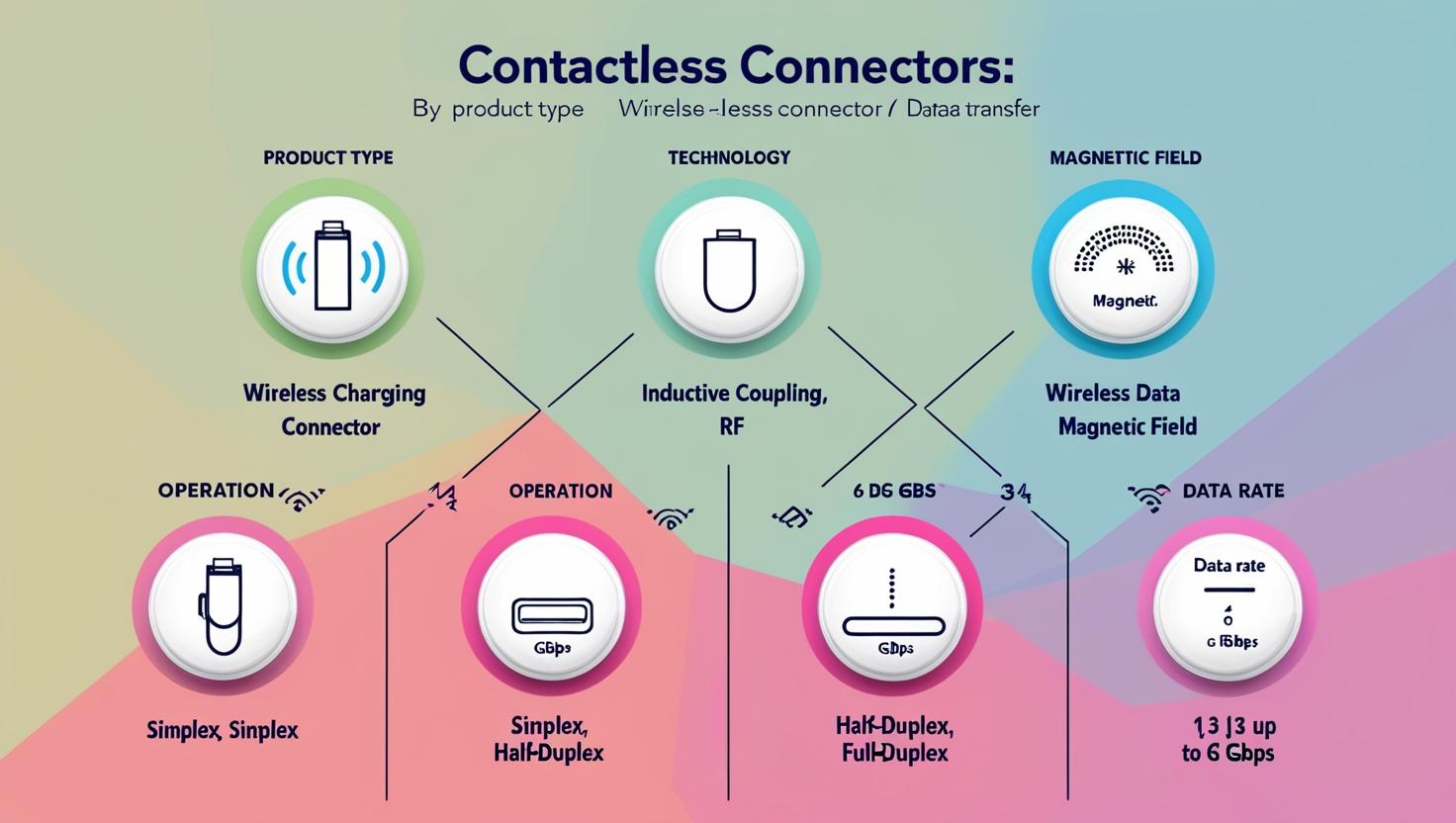In an era defined by rapid miniaturization, increasing data demands, and the relentless pursuit of reliability, contactless connectors are emerging as a game-changing technology in the world of next-generation electronics. Whether it’s enabling autonomous vehicles, powering medical implants, or enhancing industrial automation, these innovative connectors are reshaping how systems connect, communicate, and perform.
What Are Contactless Connectors?
Unlike traditional connectors that rely on physical metal-to-metal contact, contactless connectors transmit data and power wirelessly — often through technologies such as inductive coupling, magnetic resonance, or radio frequency (RF). This non-mechanical approach eliminates the need for pins, sockets, or exposed interfaces, offering a range of advantages that are increasingly aligned with the needs of modern electronics.
Key Drivers Behind the Shift to Contactless
1. Miniaturization & Design Flexibility
As devices continue to shrink in size — from wearables to advanced medical implants — the physical limitations of traditional connectors become a bottleneck. Contactless connectors allow for seamless integration into compact, sealed, or curved enclosures, giving engineers the freedom to innovate without mechanical constraints.
2. Durability in Harsh Environments
Mechanical connectors are prone to wear, corrosion, and failure — especially in high-vibration, high-moisture, or dusty environments. Contactless solutions eliminate exposed contacts, making them ideal for harsh conditions like automotive, aerospace, or industrial settings.
3. High-Reliability & Maintenance Reduction
The lack of mechanical wear points significantly increases the lifespan of contactless connectors. This is particularly crucial for mission-critical applications — such as medical devices, defense electronics, and robotics — where failure is not an option and maintenance access is limited or costly.
Download PDF Brochure @ https://www.marketsandmarkets.com/pdfdownloadNew.asp?id=63364524

4. Evolving Data & Power Needs
Modern electronics require higher data transmission rates and more efficient power delivery. Contactless connectors can be optimized to deliver fast, stable connections using magnetic or RF technologies that rival — and in some cases surpass — traditional interfaces.
5. Rising Adoption in EVs and Autonomous Systems
Electric vehicles (EVs), autonomous drones, and smart factory robots are increasingly adopting contactless connectors to reduce mechanical complexity and enable hot-swappable modules, real-time diagnostics, and more compact form factors.
Key Industries Embracing Contactless Connector Technology
| Industry | Application Example |
|---|---|
| Automotive | EV battery packs, sensor modules, infotainment systems |
| Healthcare | Implantable devices, diagnostic equipment, surgical tools |
| Consumer Electronics | Smartwatches, wireless earbuds, fitness trackers |
| Industrial Automation | Robotics, machine vision systems, sensor networks |
| Aerospace & Defense | Avionics, unmanned aerial systems, rugged communications |
Challenges & Considerations
While the benefits are compelling, contactless connectors still face technical and market hurdles:
-
Cost: Advanced materials and precision design often make them more expensive than legacy solutions.
-
Interference: Wireless data and power transmission must be shielded from electromagnetic interference (EMI).
-
Standardization: A lack of industry-wide standards can slow adoption and complicate interoperability.
However, ongoing R&D and growing demand are rapidly addressing these limitations, paving the way for broader use.
The Road Ahead
As electronic systems become smarter, smaller, and more autonomous, contactless connectors will play a pivotal role in shaping the future of connectivity. Their unique combination of durability, flexibility, and performance makes them not just an alternative, but a necessity in many cutting-edge applications.
For engineers, product designers, and OEMs looking to stay competitive, investing in or exploring contactless connector technology is no longer optional — it’s strategic.
In conclusion, contactless connectors represent a quiet revolution in how devices interact, especially as we step into an era dominated by AI-driven machines, ubiquitous sensors, and the Internet of Everything. As the demand for smarter, safer, and more reliable electronics grows, these connectors are positioned to become an integral part of the next-gen tech ecosystem.
FAQ: Contactless Connectors in Next-Gen Electronics
1. What is a contactless connector?
A contactless connector is a device that transmits power and/or data without physical contact between conductors. It typically uses inductive coupling, magnetic resonance, or RF (radio frequency) to establish a connection, eliminating the need for mechanical pins or sockets.
2. How do contactless connectors work?
Most contactless connectors operate through:
-
Inductive coupling for power transfer (similar to wireless charging).
-
Magnetic or capacitive coupling for signal transmission.
-
RF or optical communication for high-speed data exchange.
These technologies allow energy and data to pass through air, plastic, or other non-conductive materials.
3. What are the main advantages of contactless connectors?
-
No mechanical wear or corrosion
-
Sealed, waterproof designs
-
Greater reliability in harsh environments
-
Compact and flexible form factors
-
Maintenance-free operation
-
High-speed, efficient data and power transfer
